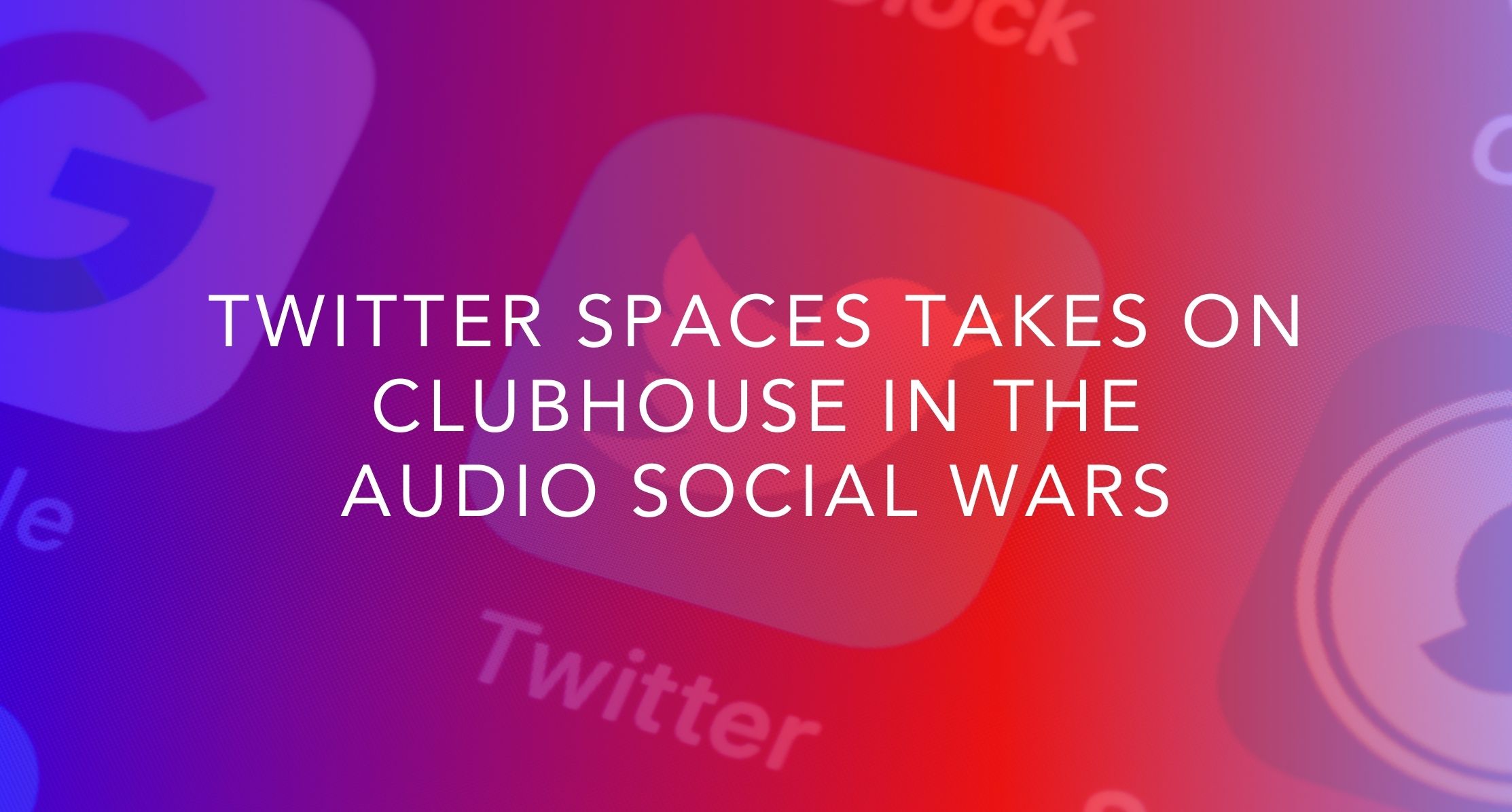In something I like to call the Social Clone Wars™, Clubhouse has a rival: Twitter Spaces. Twitter Spaces is the bird’s take on audio social, and it’s going to give Clubhouse a run for its money. Clubhouse was the first to market, sure, but Twitter has a massive, loyal user-base of Twitterati who love nothing more than to speak their minds.
Buttttt let’s back up the bus on hot second. A bit of background, earlier this year Clubhouse rocked our social worlds by becoming the first platform to offer a voice-only social chat room. Celebrities, influencers, creators, entrepreneurs and regular peeps have dashed (invites pending) to the platform to take part in world-class discussions and listen to the dulcet tones of the thought leaders we most admire.
So, how does this relate to Twitter Spaces, and should we flock there instead of Clubhouse? Or split our time (and delicate vocal cords) between the two? We have all the questions and scratchy throats – someone pass the lozenges!
Twitter Spaces: a quick look under the hood
Twitter Spaces pretty much works the same way as Clubhouse, but here’s a quick nuts-and-bolts overview….so far.
As a Host, you create a “Space” by holding down the button you’d usually use to compose a Tweet. Next, you have the option to create a description for your Space. Pro Tip: this description can be modified on the fly, allowing you to course correct if your Space switches topics or features sessions within sessions.
Pro Tip: As of the writing and publishing of this blog, only a select number of users can set up a space.
You invite people to join via DM or by tweeting or sharing a link – but any old tweep can stop in and join as a Listener. Spaces are public like Tweets, and appear at the top of your timeline. The Host is in charge of toggling speaking permissions, but Listeners can request the floor if desired. You can have up to 11 people speaking in a Space at a time, although Listener numbers are unlimited. (Captions are also available as an accessibility measure.) The Space disappears when the Host “ends” the session, so take notes if you want a record of what was said.
Because Trolls lurk among us (and especially on Twitter) Twitter has included reporting and blocking options – Hosts, Listeners and Speakers can all use these. There’s also an option to report a Space if you think it violates Twitter’s rules.
Will The Birdhouse Win Out Against Clubhouse?
It’s too soon to tell, but there’s something satisfying about not having to build a community from scratch on Twitter at the moment.
And internet rumor has it, Facebook is also soon to unleash an audio chat contender on the world, adding to the competition.
But let’s take a glimpse into some pros and cons with Clubhouse vs. Twitter Spaces.
With Clubhouse, followers are arguably more engaged. The culture that’s cultivated on Clubhouse is one of community over competition (when you find the right rooms). I heard from one avid Clubhouse user describe the app as not a social media app, it’s a community builder app and I found that definition not only fascinating but also super spot on. And just like we’ve seen through video content, audio only content can also help lay the foundation at an accelerating pace to build upon the “know, like, trust” factor from prospects.
Other perks, the interface of the platform that allows for more engagement both on and off the platform. That means the ability to invite followers into rooms is a big win. But Clubhouse is limited to its audio chat room functionality, you have to connect outside the app to directly connect and message others. This is typically done through Instagram profile’s DMs.
For Twitter Spaces, the direct communication with others in the Space can be done right within Twitter. Every new follower you land through your Spaces will subsequently see all of your Tweets and Fleets (Twitter Stories) on their timeline.
That means more opportunities to spread the word and drive engagement over time. And Twitter already has a massive userbase, meaning that your Spaces are more likely to be seen in the first place.
What about the ability to find cool, relevant chats? Clubhouse is famous for its “hallway”, the homescreen feed that shows you a bunch of rooms you can pop in and out of. Twitter doesn’t have this, but it does have your Twitter feed, which is already tailored based on your interests and the people you follow. If a great Space is happening, you’re probably going to see it without going searching for it. Time will tell.
All this being said, one is not better than the other at this point…we’re still in the infancy of both of these audio-only community building social media-esc apps and features. It all goes back to strategy!
Want more hot takes on Twitter Spaces and Clubhouse? Come find me on social and let’s talk strategy!

